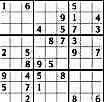
| Big Business |
 |
followthemedia.com - a knowledge base for media professionals |
|
|
AGENDA
|
||
The Bad News for Newspapers Keeps Getting Worse: “Newspaper Revenue Shifts to the Internet” Cries Out One Headline, “Bank Warns Newspapers of Rough 2006” Screams AnotherJust what a newspaper publisher doesn’t want to hear: “The consistent growth in overall Internet advertising shows marketers may be shifting more of their total advertising budgets online,” according to David Silverman, a partner with PriceWaterhouseCoopers.And while newspapers that are investing in their web activities may take some solace from that -- a typical local newspaper is now grabbing around 20% of its city’s active Internet users, according to Nielsen/NetRatings -- the reminder that a dollar spent on print advertising brings only about 35 cents on the web serves to illustrate the financial plight newspapers are facing. And when a newspaper like the San Jose Mercury, long the cash cow of Knight-Ridder, announces an 18% reduction – 51 journalists -- in its newsroom the problems just seem to be getting worse.
The Interactive Advertising Bureau and PriceWaterhouseCoopers, said in a report this week that Internet advertising for the first six months of 2005 hit $5.8 billion, a 26% increase over the same period a year before. Search ads represent about one-third of the total and are forecast to outpace display ads by 2010, which gives a fair idea why Google and Yahoo are doing so well. Bank of America Securities sets its scene with the headline, “From a slow bleed to hemorrhage?” A bank statement said, “Given the secular shift toward the Internet and away from newspapers, we remain bullish on the Internet sector as an investment and cautious on the newspaper group as a whole.” And sticking the knife in firmer and twisting it, the bank added, “We expect national players which likely face higher fragmentation and retailer consolidation issues, to continue to be struck in a quagmire.” The reference to retailer consolidation is to Federated Department Stores. Pickup almost any major metropolitan US newspaper and it usually has pages of department store display ads. But there is almost a panic setting in at many newspapers that Federated, which recently merged with May Department Stores, is in the midst of consolidating many of its various brands names under the Macys label. That will allow it to launch national advertising – rather than maintain separate local advertising -- and that the spend under the Macys consolidation will be less than it is now. And when the May merger is completed it will go down even more. Federated currently spends some $900 million annually on newspaper advertising. And according to Merrill Lynch, Federated is also shifting some of its spend to television and direct mail. As if newspapers weren’t having enough trouble with the mostly free Craigslist taking away millions of dollars in classified advertising, the chief executive of Monster.com told Reuters that he is going to compete even more with newspapers to get a slice of that $16 billion classified pie which represents about 40% of a newspaper’s advertising revenues.. And on top of all that newsprint prices have risen about 10 per cent from a year ago causing some newspapers to experiment with lighter weight paper (causes ink problems) to narrowing the size of a page. The only real silver lining in the circulation declines of of so many newspapers is that their use of newsprint is down, too.  Could this save newspapers?Perhaps the only good news comes from the Newspaper National Network that claims from a survey that newspapers are the most comprehensive source of news, according to 46% of those polled. That was followed by television (35%), Internet (35%), radio (12%) and magazines (7%). The survey, co-funded by the Newspaper Association of America, also reported that 42% of those surveyed trusted newspaper advertising as compared to television (30%), magazines (29%) and the Internet (25%). But when it comes to entertainment, newspaper fall flat with just an 11% vote compared to 61% for television. And in the “We’ll try anything” the Japanese number game of Sudoku is proving a big hit in American newspapers,. Newspapers like the Washington Post hope it will become as popular as crossword puzzles. So what the game can be played online for free – whatever it takes to get that newspaper entertainment rating up! |
| copyright ©2005 ftm publishing, unless otherwise noted | Contact Us • Sponsor ftm |